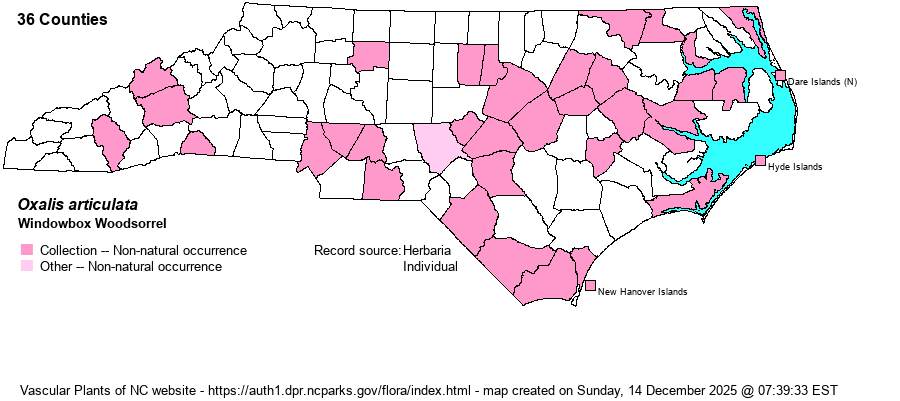| Author | Savigny | |
| Distribution | Mostly in the Coastal Plain and lower Piedmont; scarce westward.
Native of South America; in N.A. VA to FL and TX, CA-OR. | |
| Abundance | Uncommon to fairly common in the Coastal Plain and lower Piedmont; rare westward. | |
| Habitat | Yards, disturbed woods, along creeks and rivers, campuses, roadsides. | |
| Phenology | Flowering late March-May; sometimes again in October-November. | |
| Identification | This woodsorrel has relatively large leaves that are not blotched with purple on the upper surface, as in the native O. violacea. Petals are magenta, rose, or pink. | |
| Taxonomic Comments | A name often used for this plant is O. rubra.
| |
| Other Common Name(s) | Often called Pink Woodsorrel, or Pink Sorrel. However, O. debilis is generally named as Pink Woodsorrel, and thus one of these two needs another name; "Pink Sorrel" isn't the best, as the group common name for Oxalis is "Woodsorrel". An alternative name for O. articulata is Windowbox Woodsorrel, which will have to suffice to avoid identical or very confusing common names. | |
| State Rank | SE | |
| Global Rank | GNR | |
| State Status | | |
| US Status | | |
| USACE-agcp | | |
| USACE-emp | | |

